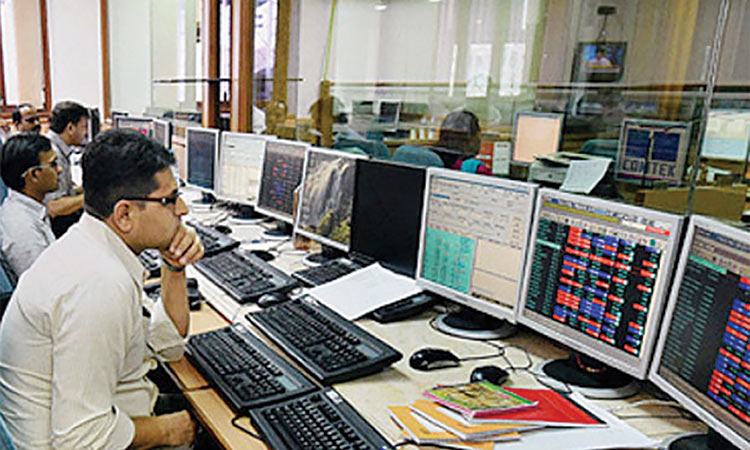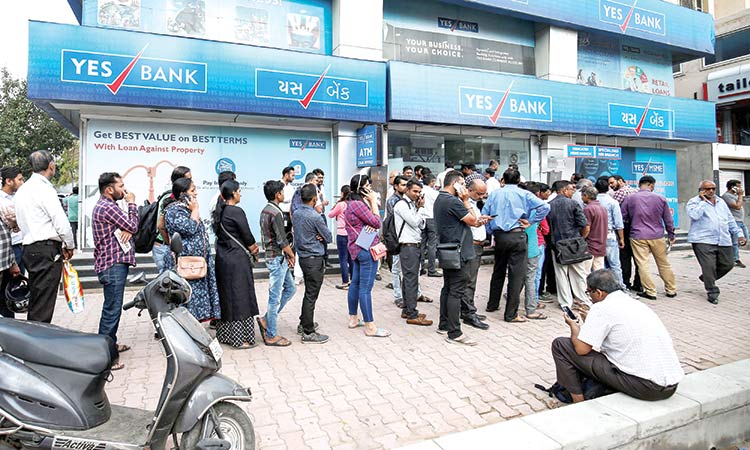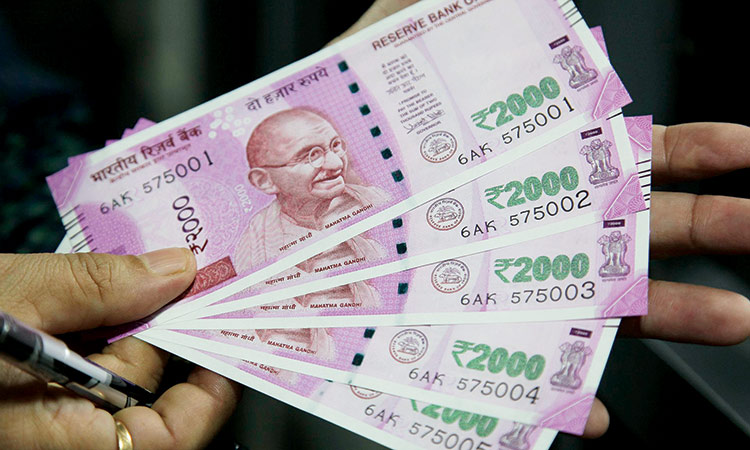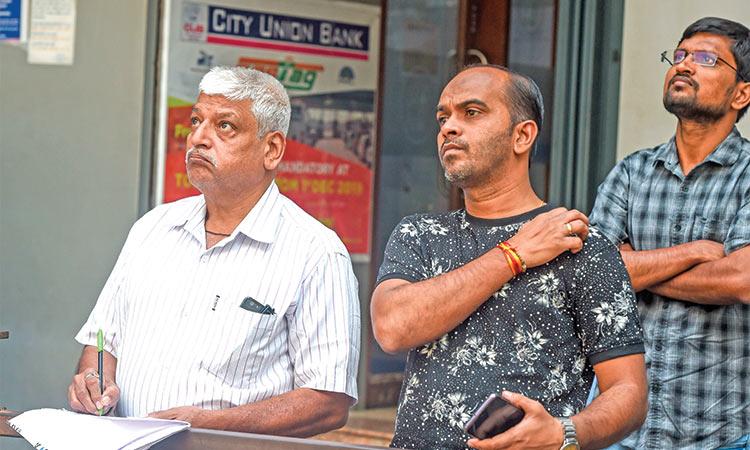Sensex crashes 1,000 points, Nifty below 8,400 due to virus outbreak

Traders observe stock trading at a local company in Mumbai.
At 1.10 pm, Sensex was trading at 28,792.18, lower by 1,023.41 points or 3.43 per cent from the previous close of 29,815.59 It had opened at 29,226.55 and so far has touched an intra-day high of 29,497.57 and a low of 28,708.83 points Nifty was trading at 8,396.55, lower by 263.70 points or 3.04 per cent from its previous close.
Although it has been a sell-off across all sectors, banking, financial and auto stocks witnessed heavy selling pressure.
On the Sensex, Bajaj Finance, HDFC, Mahindra & Mahindra, Tata Steel and Maruti Suzuki lost the most while Tech Mahindra, Hindustan Unilever, Nestle India, TCS and Asian Paints were the only gainers.
Indian rupee could see sharper depreciation to over Rs 80 to a dollar if the Covid-19 related disruptions are prolonged and country is to go in for complete lockdown till June end, Acuite Ratings and Research has said in its latest impact analysis report.
The credit rating agency has presented scenarios for the Indian rupee to give its assessment on the extent of exchange rate volatility that the currency may face amid the worsening coronavirus pandemic in the current calendar year.
Accordingly, it has considered one short term scenario and four longer term scenarios, delineating how the exchange rate will evolve under them. The factors considered in these assessments include, Oil Price, Fed Balance Sheet, USD-Yuan Exchange Rate and Net FII Inflows.
The scenario analysis indicates that if the impact of the pandemic is particularly severe with a lockdown in India for the whole of April-June quarter along with global oil prices averaging at $40 per barrel, the rupee may inch up to the band Rs 81-83 per dollar during this period.
However, if the average oil prices were to come down to $30, the rupee-dollar is likely to stabillize in the band of Rs 77-78 by September 2020.
In a best case scenario where the virus attack peters out within the next few weeks and the shutdown is quickly lifted, the rupee can actually bounce back to the levels of Rs 71-73 per dollar, the credit rating agency has said.
Even if the oil prices were to unexpectedly rise on the back of OPEC production cuts in such a rapid revival scenario, the rupee is likely to come down to the band of Rs 73-74, it added.
A sector-wise analysis by Acuite Ratings on the impact of the rupee depreciation indicates that if the exchange rate were to remain beyond Rs 75 levels, there would be an adverse impact on the chemical, engineering goods, electrical machinery and electronic goods sectors where the scale of imports is significantly high.
On the other hand, the sectors that will benefit from the rupee depreciation are clearly the export oriented businesses such as IT services, textiles, leather, pharmaceuticals and some agro commodities.
The Covid-19 pandemic has brought in extraordinary disruption in the world economy and has put the global capital markets in turmoil. With funds in a hurry to exit emerging market assets and return to safer haven like the US treasuries, there has been a very sharp impact on most of the latter currencies including the Indian rupee.
Since the beginning of the current month and the intensification of the Covid-19 pandemic globally, the rupee has already depreciated by 5 per cent and had crossed the threshold of Rs 76 a dollar albeit it has partly climbed back due to the stimulus measures announced by the RBI and the Government.
While RBI is expected to continue its periodic intervention through open market operations and currency swaps, such intervention is not expected to be duly aggressive with an intent to protect the rupee at a particular level. This is primarily on account of the central bank’s strategy to conserve its foreign currency reserves and also the risk of being tagged as a currency manipulator in a scenario of continuous currency support.
The credit rating agency noted that the market panic, like always, is driving demand of instruments issued in the US, EU and Japan which is considered as ‘safe haven’. The said demand is primarily for the respective sovereign issuances and highly rated corporate debt. Such is the demand that US 10 year Government securities are now yielding sub 100 bps, similar trends have been seen in European sovereign debt, where even sub optimal sovereign debt from nations such as Greece has been yielding 982 bps on the back of inferred ECB guarantees. Popular European sovereigns, on the other hand were in fact yielding negative in similar durations. German Bundes bonds and UK Gilt (10 year) are for instance yielding (-) 610 bps and (-) 32 bps, respectively.







